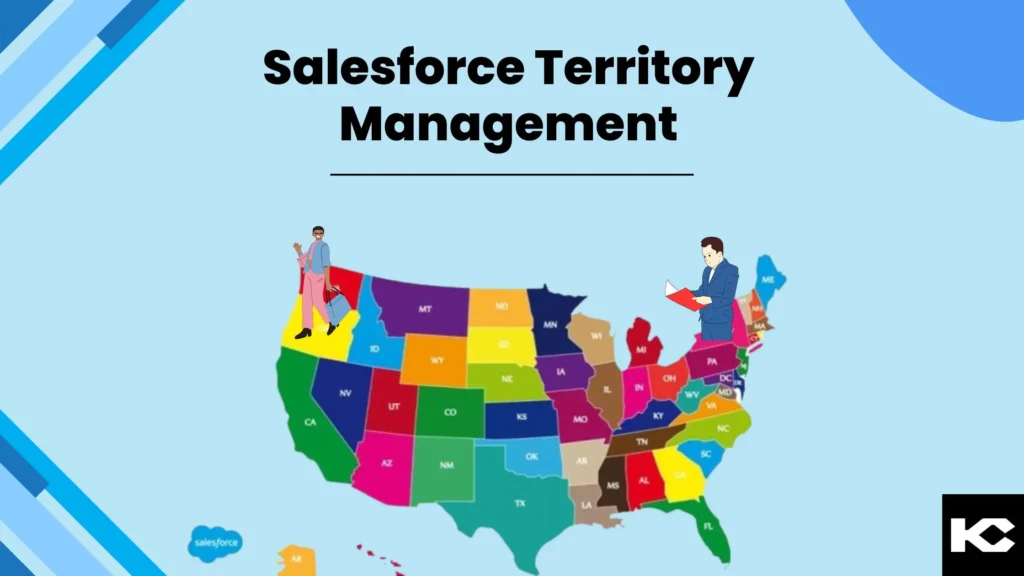Salesforce Territory Management [2024]
In the dynamic world of sales, managing territories effectively can make a significant difference in maximizing sales performance and enhancing customer relationships. Salesforce Territory Management is a robust tool designed to help businesses efficiently allocate resources, balance workloads, and optimize sales strategies. This comprehensive guide will explore the key features, benefits, and best practices for leveraging Salesforce Territory Management to its full potential.
What is Salesforce Territory Management?
Salesforce Territory Management is a feature within Salesforce that allows businesses to define and manage sales territories in a way that aligns with their strategic goals. It enables organizations to segment their markets, allocate sales resources effectively, and ensure that each sales representative has a fair and manageable workload.
Key Features of Salesforce Territory Management
- Territory Model Hierarchies:
- Create a flexible, multi-level hierarchy to reflect your company’s sales structure.
- Easily visualize and manage territories, sub-territories, and their relationships.
- Rule-Based Assignment:
- Use rules to automatically assign accounts to territories based on criteria such as geography, industry, or account size.
- Ensure that accounts are distributed evenly and according to strategic priorities.
- Flexible Territory Types:
- Define different types of territories, such as geographic regions, product lines, or industry verticals.
- Customize territories to meet the specific needs of your business.
- Performance Metrics and Reporting:
- Track and analyze key performance indicators (KPIs) for each territory.
- Generate reports and dashboards to gain insights into territory performance and identify areas for improvement.
- Integration with Salesforce CRM:
- Seamlessly integrate with other Salesforce features like Opportunity Management, Lead Management, and Forecasting.
- Ensure a unified view of sales activities and performance across the organization.
Checkout the Salesforce Sales Cloud Implementation Checklist
Benefits of Territory Management
- Optimized Resource Allocation:
- Distribute sales resources more effectively to cover all target markets without overloading any single representative.
- Maximize sales potential by ensuring that the right accounts are assigned to the right reps.
- Enhanced Sales Performance:
- Improve sales performance by aligning territories with strategic goals and market opportunities.
- Enable sales reps to focus on high-potential accounts and areas.
- Improved Customer Coverage:
- Ensure that all customers and prospects are covered adequately, reducing the risk of missed opportunities.
- Enhance customer satisfaction by providing consistent and personalized attention.
- Data-Driven Decisions:
- Leverage detailed analytics and reporting to make informed decisions about territory adjustments and strategy.
- Continuously monitor and refine territory assignments to stay aligned with market changes and business goals.
Complete guide for implementing Sales Territory Management
Best Practices for Implementing Territory Management
- Define Clear Objectives:
- Establish clear objectives for your territory management strategy, such as increasing market coverage, balancing workloads, or boosting sales in specific regions.
- Involve Key Stakeholders:
- Engage sales leaders, representatives, and other key stakeholders in the planning and implementation process.
- Gather input and feedback to ensure that the territory model aligns with the needs of the business and the sales team.
- Use Data to Drive Territory Design:
- Leverage historical sales data, market analysis, and customer insights to design territories that maximize sales potential.
- Continuously update and refine your territory model based on performance data and market changes.
- Automate Where Possible:
- Utilize rule-based assignment to automate the distribution of accounts and reduce administrative overhead.
- Ensure that your system is flexible enough to accommodate exceptions and manual adjustments when needed.
- Monitor and Adjust Regularly:
- Regularly review territory performance and make adjustments as necessary to address imbalances or changes in market conditions.
- Use Salesforce’s reporting and analytics tools to track progress and identify areas for improvement.
Are you looking for implementation support for Salesforce Territory Management?
Conclusion
Salesforce Territory Management is a powerful tool that can transform the way businesses allocate resources, manage sales territories, and drive performance. By leveraging its features and following best practices, organizations can optimize their sales strategies, enhance customer coverage, and make data-driven decisions that lead to greater success. Whether you’re just starting with territory management or looking to refine your existing approach, Salesforce provides the flexibility and capabilities needed to achieve your goals.
If you’re ready to take your sales territory management to the next level, contact us at Kizzy Consulting for expert guidance and support. Our team of Salesforce consultants can help you design and implement a territory management strategy tailored to your business needs.
About Kizzy Consulting:
Kizzy Consulting is a Salesforce Ridge Consulting Partner in the USA and Australia with a proven track record of successful Salesforce implementations. We specialize in helping businesses leverage Salesforce to optimize their sales processes and achieve their strategic goals. Get in touch with us at [email protected] to learn more about how we can support your Salesforce journey.




